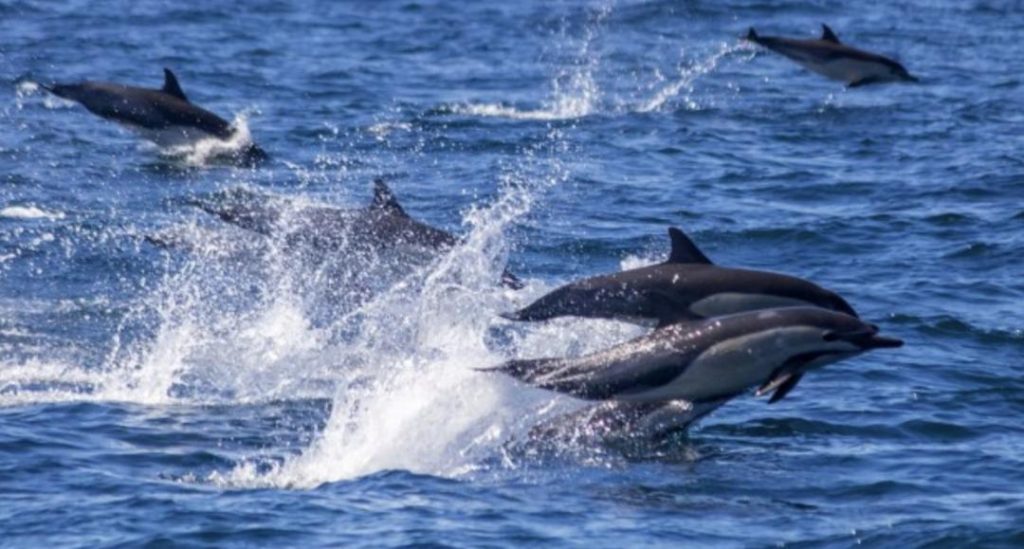
Dolphins & Whales Regularly Socialise with Each Other: Study
In a fascinating discovery, researchers from Griffith University have found that dolphins and whales frequently socialize with each other, engaging in playful interactions that are often mutual. The study, published recently, analyzed videos and photographs of interactions between baleen whales and dolphins, covering 19 species across 199 separate events.
The findings of the study, which have been published in the journal Marine Mammal Science, provide valuable insights into the social behavior of these marine mammals. The research team, led by Dr. Lars Bejder, observed that the interactions between dolphins and whales were not limited to just swimming together or following each other, but involved a range of playful behaviors, including swimming, leaping, and even playing with each other’s bodies.
One of the most common interactions observed was dolphins swimming near the head of a whale, often with the whale nodding its head or even blowing bubbles. This behavior was observed in multiple species, including humpback whales, gray whales, and even blue whales. The researchers believe that this behavior may be a form of social bonding or even a way for the dolphins to communicate with the whales.
Another fascinating aspect of the study was the involvement of bottlenose dolphins in the social interactions. Bottlenose dolphins were found to be the most involved dolphin species in the study, with 44% of the interactions involving them. This is not surprising, given that bottlenose dolphins are known for their intelligence and social behavior.
The study also found that the playful interactions between dolphins and whales were often initiated by the dolphins, with the whales responding in kind. This suggests that the dolphins may be taking the lead in initiating social interactions, with the whales following suit.
So, why are dolphins and whales socializing with each other? The researchers believe that these interactions may be important for social learning, communication, and even cooperation. By observing and interacting with each other, dolphins and whales may be able to learn new behaviors, share knowledge, and even work together to achieve common goals.
The study’s findings also have implications for our understanding of marine ecosystems. By recognizing the social connections between dolphins and whales, we can better understand the complex relationships within marine ecosystems and how they may be impacted by human activities such as pollution, overfishing, and climate change.
The study’s authors note that their research provides a new perspective on the social behavior of dolphins and whales, challenging our traditional views of these animals as solitary or competitive. Instead, the findings suggest that these marine mammals may be more social and cooperative than we previously thought.
In conclusion, the study’s findings offer a fascinating glimpse into the social behavior of dolphins and whales, highlighting the importance of playful interactions and social bonding in their lives. As we continue to learn more about these incredible animals, we are reminded of the importance of preserving and protecting our oceans and marine ecosystems, so that we can continue to appreciate and learn from these amazing creatures.
Source:






